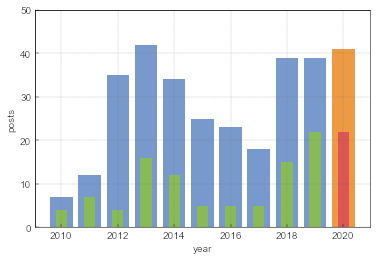Why so many predictions go wrong? In my humble opinion it is because many
people fail to understand that complex systems are complex. Namely, there are
many variables which can influence the outcome and the relationships between
those variables are often not trivial.
In case of predictions for the COVID-19 epidemics, we can't be completely sure
how well the social distancing measures will work before they are implemented.
We need data, we need some time to observe how the things change after the
social distancing measures are implemented. Afterwards we can make a reasonable
extrapolations, but they are usually just that - an extrapolation under
assumption that things will continue to happen as they are now. In physics such
assumption is obvious and justifiable, but social reality might change simply
because we made some kind of prediction.
Another excellent point given in the video below by Wisecrack, is that there
are two kinds of experts making predictions: foxes and hedgehogs. Foxes are
often scientists, who try to be as transparent (explicit about the
assumptions they make), open to new data and evidence (which can falsify some
of previously held assumptions) as they can. Foxes are prone to changing their
mind as they learn from their prior mistakes. Most of the people ignore
transparency (because they can't understand assumptions made by a fox) and
only notice that such experts often change their opinions. Public appears to
favor experts who are adamant about their predictions, because the predictions
are often bold and dramatic, yet often backed only by a belief. These experts
are known as hedgehogs.
In Lithuania we have a lot of free markets hedgehogs, who often suggest
"letting it work" ("laissez faire") as being solution to every imaginable
problem. While free markets are solutions to some problems, they are definitely
not a solution for all the problems, as free markets are based on theoretical
model, which works only when certain assumptions are satisfied (check out our
previous series of post on price formation).
So, without any further side points, we invite you to watch a video on
Wisecrack. It covers much more than we have written about in the text above.

